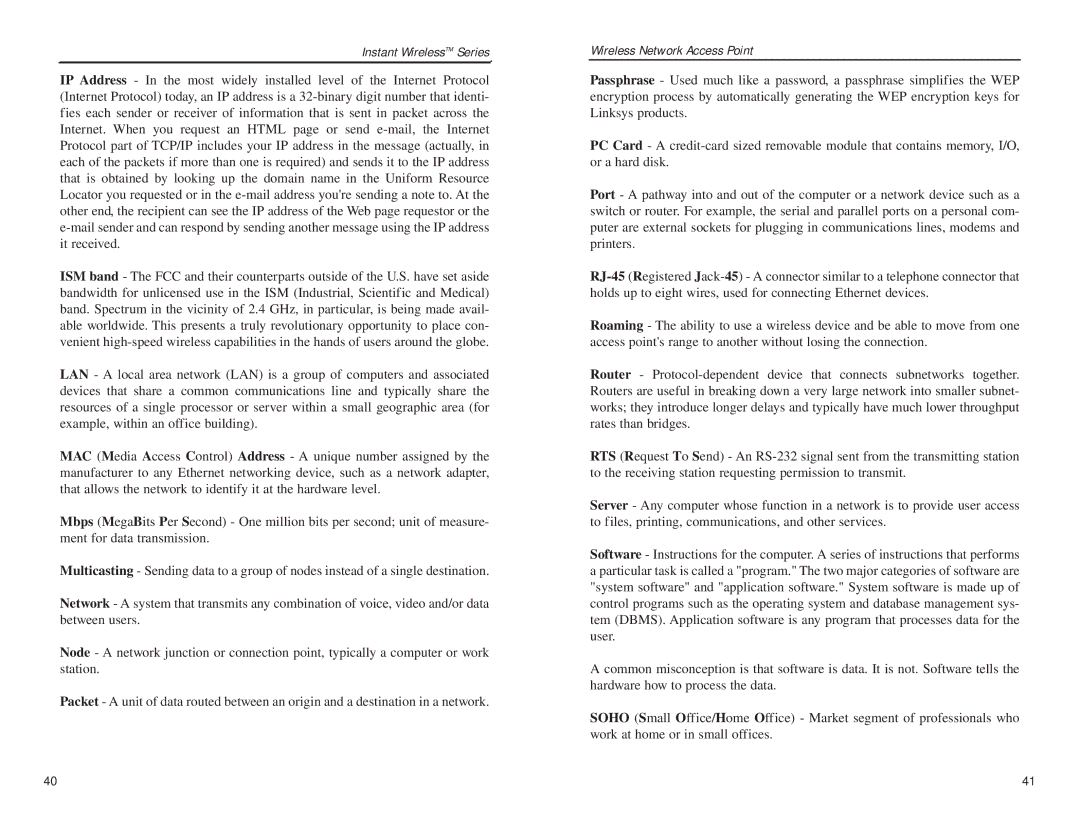Instant WirelessTM Series
IP Address - In the most widely installed level of the Internet Protocol (Internet Protocol) today, an IP address is a
ISM band - The FCC and their counterparts outside of the U.S. have set aside bandwidth for unlicensed use in the ISM (Industrial, Scientific and Medical) band. Spectrum in the vicinity of 2.4 GHz, in particular, is being made avail- able worldwide. This presents a truly revolutionary opportunity to place con- venient
LAN - A local area network (LAN) is a group of computers and associated devices that share a common communications line and typically share the resources of a single processor or server within a small geographic area (for example, within an office building).
MAC (Media Access Control) Address - A unique number assigned by the manufacturer to any Ethernet networking device, such as a network adapter, that allows the network to identify it at the hardware level.
Mbps (MegaBits Per Second) - One million bits per second; unit of measure- ment for data transmission.
Multicasting - Sending data to a group of nodes instead of a single destination.
Network - A system that transmits any combination of voice, video and/or data between users.
Node - A network junction or connection point, typically a computer or work station.
Packet - A unit of data routed between an origin and a destination in a network.
Wireless Network Access Point
Passphrase - Used much like a password, a passphrase simplifies the WEP encryption process by automatically generating the WEP encryption keys for Linksys products.
PC Card - A
Port - A pathway into and out of the computer or a network device such as a switch or router. For example, the serial and parallel ports on a personal com- puter are external sockets for plugging in communications lines, modems and printers.
Roaming - The ability to use a wireless device and be able to move from one access point's range to another without losing the connection.
Router -
RTS (Request To Send) - An
Server - Any computer whose function in a network is to provide user access to files, printing, communications, and other services.
Software - Instructions for the computer. A series of instructions that performs a particular task is called a "program." The two major categories of software are "system software" and "application software." System software is made up of control programs such as the operating system and database management sys- tem (DBMS). Application software is any program that processes data for the user.
A common misconception is that software is data. It is not. Software tells the hardware how to process the data.
SOHO (Small Office/Home Office) - Market segment of professionals who work at home or in small offices.
40 | 41 |
